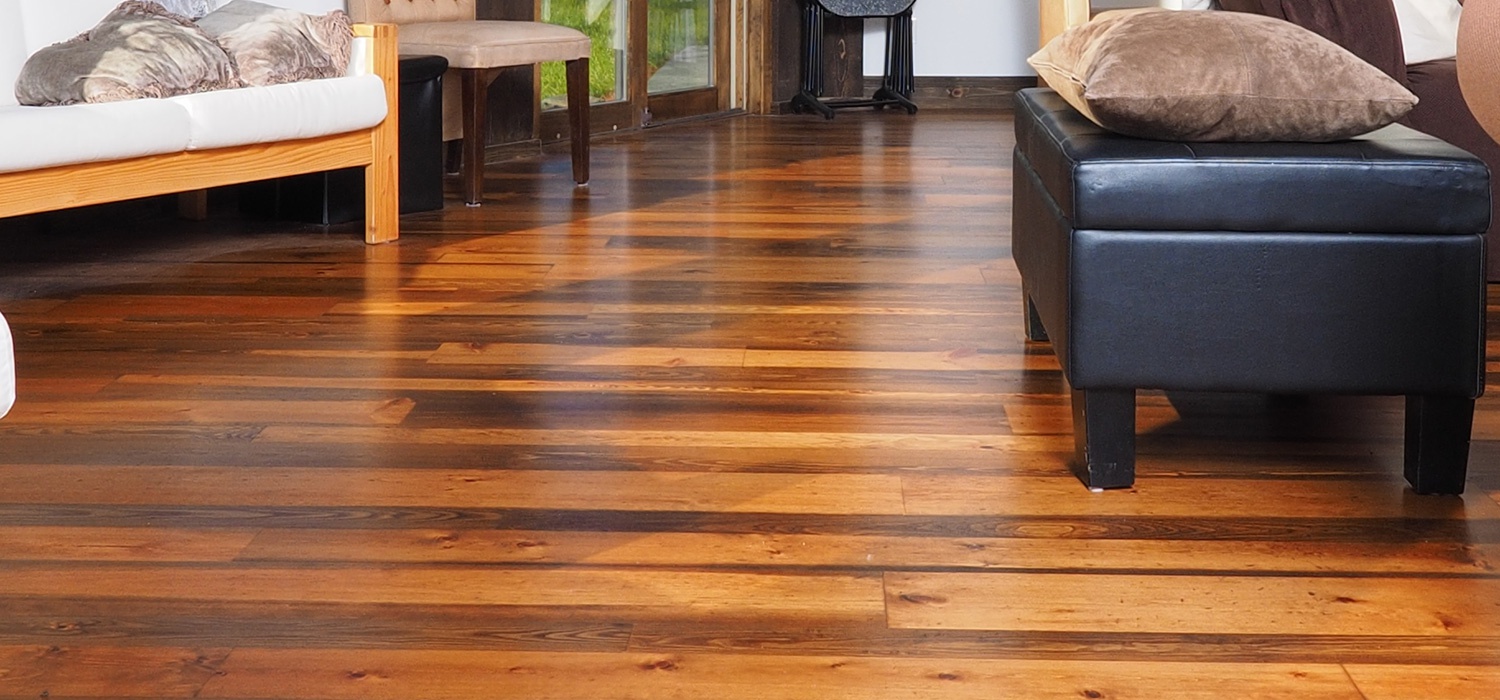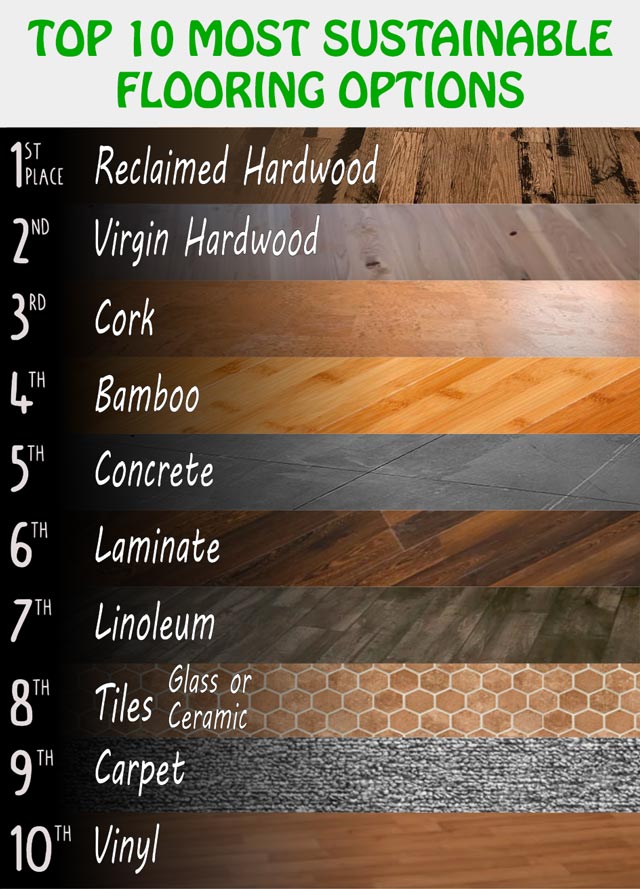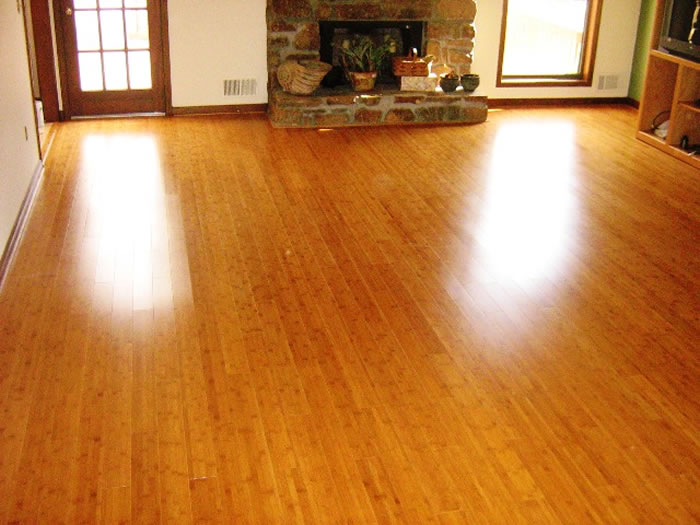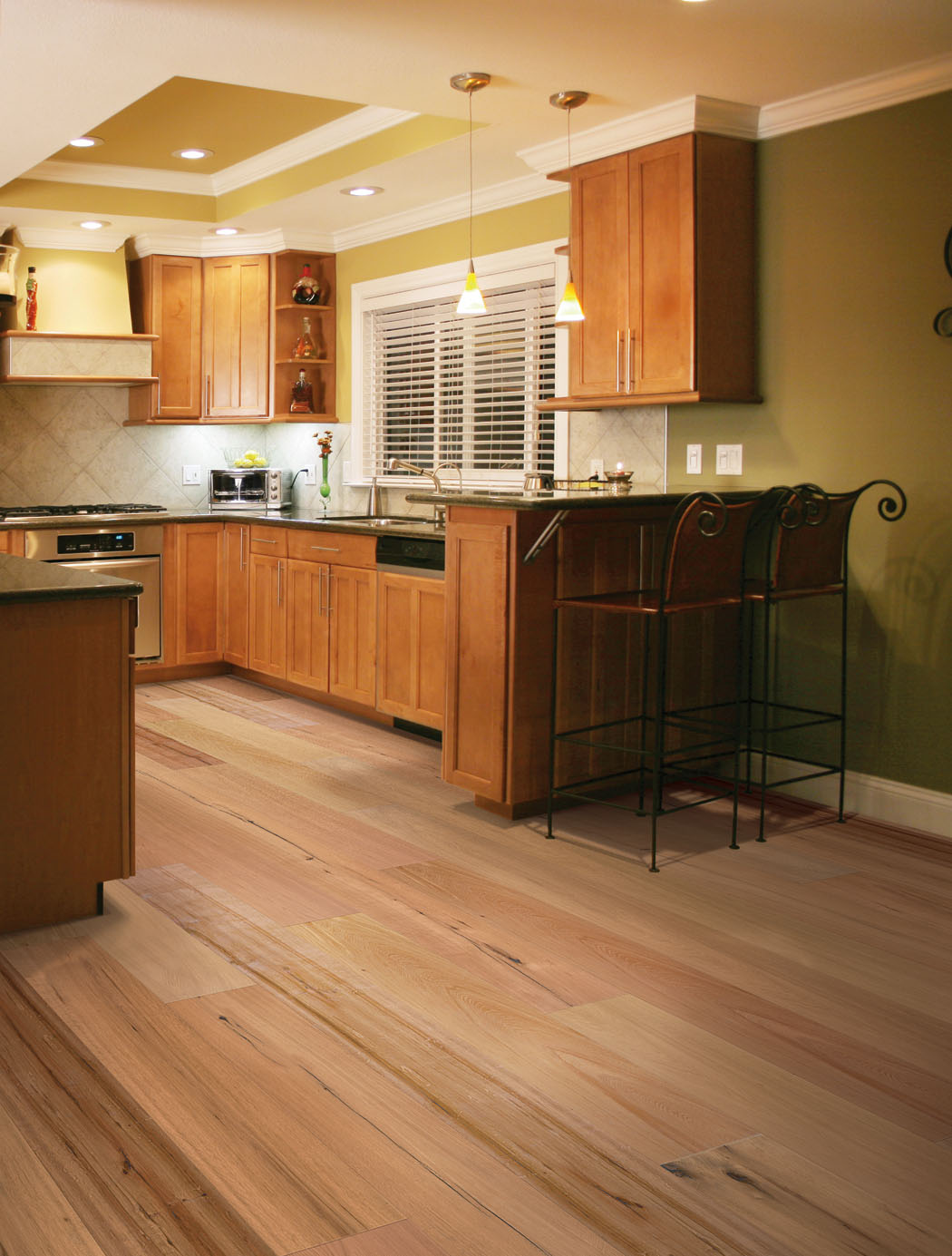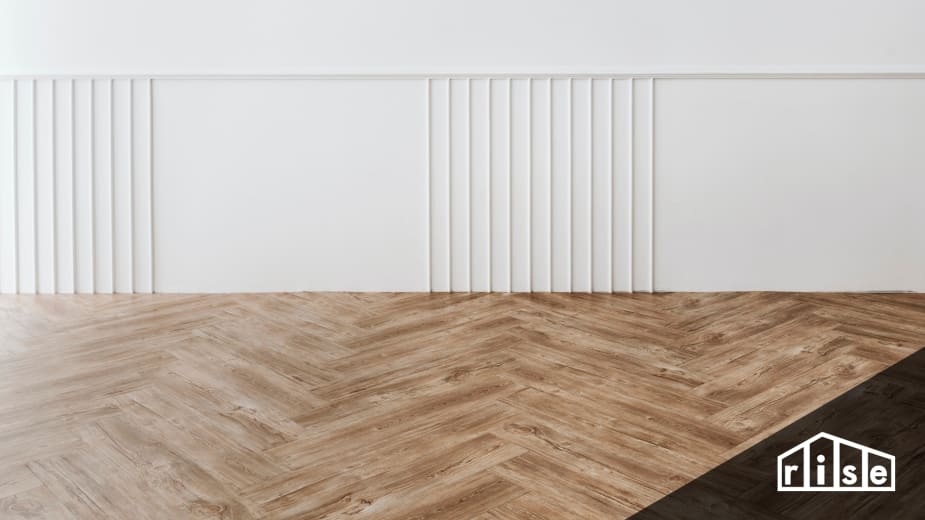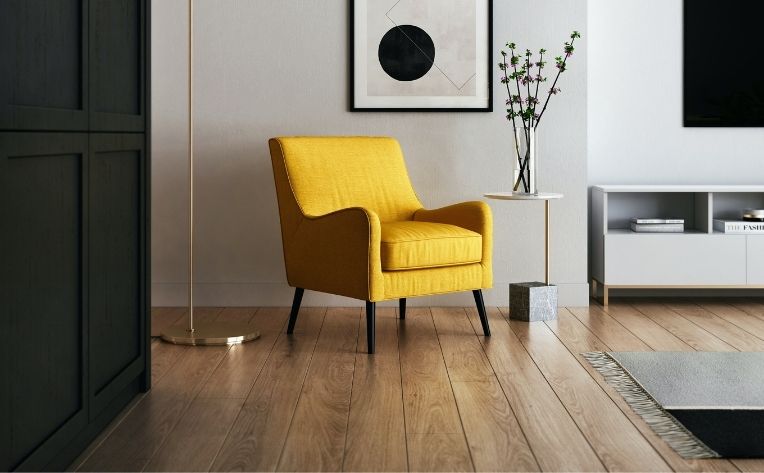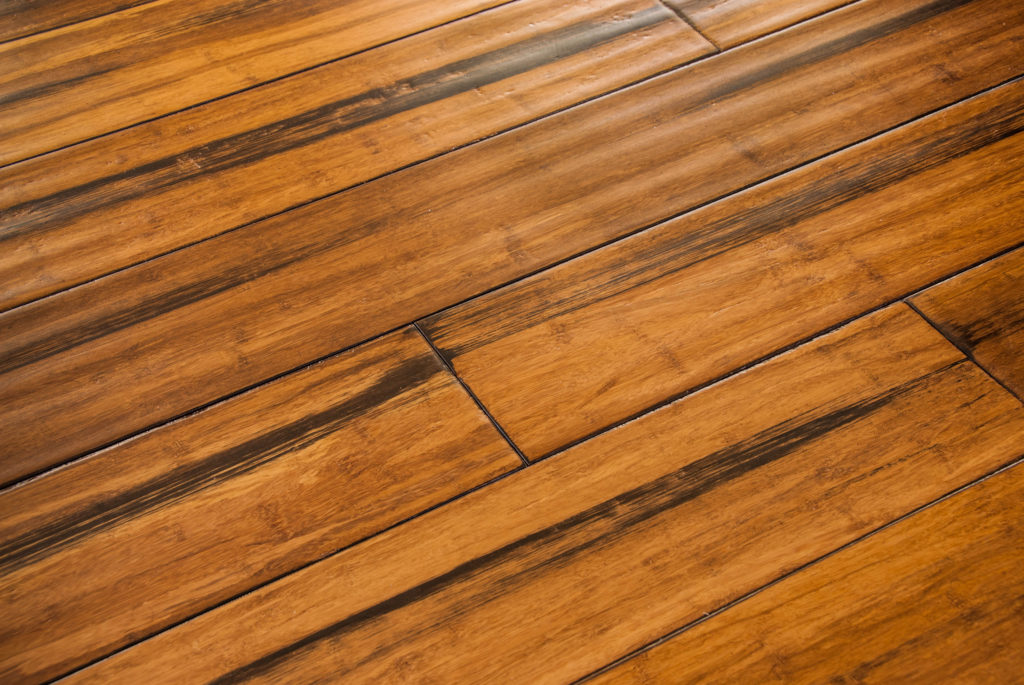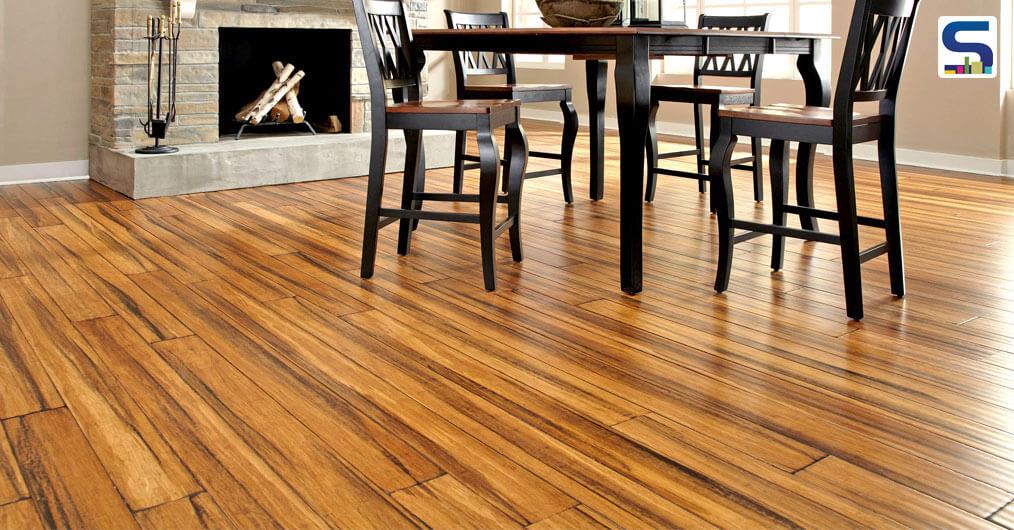Introduction to Sustainable Hardwood Flooring
Hardwood flooring adds warmth, beauty, and value to any home, but not all hardwood flooring options are environmentally friendly. Sustainable hardwood flooring offers a more eco-friendly alternative, made from responsibly sourced materials that support forest conservation and biodiversity. Below are the benefits of sustainable hardwood flooring and why it’s a popular choice for environmentally conscious homeowners.
- Environmental Benefits: Sustainable hardwood flooring is sourced from responsibly managed forests or reclaimed wood, reducing the environmental impact of deforestation and habitat destruction. By choosing sustainable hardwood flooring, homeowners can help preserve natural ecosystems and promote forest regeneration for future generations.
- Renewable Resource: Unlike other flooring materials like laminate or vinyl, hardwood is a renewable resource that can be replenished through responsible forestry practices. Sustainable hardwood flooring is harvested from forests that are managed to ensure long-term sustainability, providing a renewable and eco-friendly flooring option.
- Durability and Longevity: Hardwood flooring is known for its durability and longevity, lasting for decades with proper care and maintenance. Sustainable hardwood flooring is no exception, offering the same timeless beauty and longevity while also supporting sustainable forest management practices.
- Carbon Sequestration: Trees absorb carbon dioxide from the atmosphere as they grow, helping mitigate climate change by sequestering carbon in their wood fibers. Sustainable hardwood flooring acts as a carbon sink, storing carbon for the life of the floor and reducing the carbon footprint of the home.
- Indoor Air Quality: Sustainable hardwood flooring is a natural, non-toxic flooring option that promotes better indoor air quality compared to synthetic flooring materials. Hardwood does not trap dust, allergens, or harmful VOCs (volatile organic compounds), making it a healthier choice for homes.
- Aesthetic Appeal: Beyond its environmental benefits, sustainable hardwood flooring offers timeless beauty and elegance that enhances the aesthetic appeal of any home. With a wide range of wood species, colors, and finishes to choose from, homeowners can find the perfect sustainable hardwood flooring to complement their interior design style.

Types of Sustainable Hardwood Species
When it comes to sustainable hardwood flooring, not all wood species are created equal. Some hardwood species are more sustainable than others, depending on factors such as growth rate, harvesting practices, and forest management. Below are some of the most popular sustainable hardwood species and their unique characteristics.
Bamboo: While technically a grass, bamboo is often considered a hardwood flooring option due to its durability and eco-friendly properties. Bamboo is one of the fastest-growing plants in the world, making it highly renewable and sustainable. It regenerates quickly after harvesting and can be harvested without causing damage to the plant or surrounding ecosystem.
Cork: Cork flooring is made from the bark of cork oak trees, which can be harvested without harming the tree. Cork oak trees are native to the Mediterranean region and have a lifespan of up to 200 years. Cork flooring is known for its resilience, warmth, and natural sound absorption properties, making it a sustainable and eco-friendly flooring option.
FSC-Certified Hardwoods: The Forest Stewardship Council (FSC) certifies hardwoods that are harvested from responsibly managed forests that meet strict environmental and social standards. FSC-certified hardwood species include oak, maple, cherry, and walnut, among others. Choosing FSC-certified hardwood flooring ensures that the wood is sourced from sustainably managed forests and supports responsible forestry practices.
Reclaimed Wood: Reclaimed wood flooring is sourced from salvaged timbers, barns, or other structures, giving new life to old wood that would otherwise be discarded. Reclaimed wood flooring offers unique character, history, and charm, making it a popular choice for eco-conscious homeowners seeking sustainable hardwood flooring options.
Domestic Hardwoods: Opting for hardwood species that are native to your region can also contribute to sustainability by reducing transportation emissions associated with importing exotic hardwoods. Domestic hardwood species such as oak, maple, hickory, and cherry are readily available and can be harvested sustainably from managed forests in North America.
Exotic Hardwoods: While exotic hardwoods offer unique colors and grain patterns, they may not always be the most sustainable choice due to issues such as deforestation, illegal logging, and habitat destruction. When considering exotic hardwood species for flooring, look for certifications such as FSC or verify that the wood is sourced from responsibly managed forests.
Eco-Friendly Hardwood Flooring Installation Practices
Installing sustainable hardwood flooring involves more than just choosing the right wood species. Eco-friendly installation practices also play a crucial role in minimizing environmental impact and ensuring a sustainable flooring solution. Here are some eco-friendly hardwood flooring installation practices to consider for your next flooring project.
Choose Low-VOC Adhesives and Finishes: Volatile organic compounds (VOCs) are harmful chemicals found in many flooring adhesives and finishes that can off-gas into the air, contributing to indoor air pollution and health problems. Opt for low-VOC or zero-VOC adhesives and finishes that are safer for indoor air quality and environmentally friendly.
Use Water-Based Adhesives and Finishes: Water-based adhesives and finishes are less toxic and have lower VOC emissions compared to solvent-based products. Water-based adhesives are also easier to clean up and have a faster drying time, reducing installation time and environmental impact.
Minimize Waste: To minimize waste during installation, carefully plan the layout of the hardwood flooring to optimize material usage and reduce the number of cuts and offcuts. Use leftover scraps and offcuts for smaller areas or future repair and maintenance projects, and recycle any unused materials according to local recycling guidelines.
Choose Floating Floor Installation: Floating floor installation is a method where hardwood planks are interlocked or glued together without being attached to the subfloor. This installation method requires less adhesive and allows for easier removal and reuse of the flooring in the future, reducing waste and environmental impact.
Opt for Nail-Down Installation: Nail-down installation is another eco-friendly installation method that uses mechanical fasteners, such as nails or staples, to secure the hardwood planks to the subfloor. This installation method eliminates the need for adhesives and reduces the risk of off-gassing VOCs into the air.
Proper Disposal of Waste: Dispose of any waste materials, such as packaging, offcuts, and old flooring, responsibly according to local recycling and waste management guidelines. Recycle cardboard packaging and dispose of any hazardous materials, such as adhesives or finishes, at designated hazardous waste disposal facilities.
Certifications and Labels for Sustainable Hardwood
When shopping for sustainable hardwood flooring, certifications and labels can help you identify products that meet strict environmental and social standards. These certifications ensure that the hardwood flooring is sourced from responsibly managed forests and supports sustainable forestry practices. Below are some of the most recognized certifications and labels for sustainable hardwood flooring.
Forest Stewardship Council (FSC): The Forest Stewardship Council (FSC) is an international non-profit organization that promotes responsible forest management worldwide. FSC-certified hardwood flooring is sourced from forests that meet strict environmental, social, and economic standards, including protection of biodiversity, respect for indigenous peoples’ rights, and adherence to sustainable forestry practices.
Programme for the Endorsement of Forest Certification (PEFC): The Programme for the Endorsement of Forest Certification (PEFC) is an international organization that promotes sustainable forest management through independent third-party certification. PEFC-certified hardwood flooring ensures that the wood is sourced from forests that are managed responsibly and sustainably.
Cradle to Cradle (C2C) Certification: Cradle to Cradle (C2C) certification evaluates products based on their environmental and social performance throughout their lifecycle, from raw material extraction to end-of-life disposal. C2C-certified hardwood flooring is assessed for factors such as material health, material reutilization, renewable energy use, water stewardship, and social fairness.
GreenGuard Certification: GreenGuard certification verifies that hardwood flooring products meet stringent chemical emissions standards for indoor air quality. GreenGuard-certified hardwood flooring emits low levels of volatile organic compounds (VOCs) and other harmful chemicals, promoting healthier indoor environments.
Energy Star Certification: While primarily known for energy-efficient appliances and building materials, Energy Star certification also extends to hardwood flooring products that meet strict energy efficiency and environmental performance criteria. Energy Star-certified hardwood flooring is tested and verified to reduce energy consumption and environmental impact during manufacturing, transportation, and use.
LEED Certification: Leadership in Energy and Environmental Design (LEED) certification is a globally recognized green building rating system that evaluates the environmental performance of buildings and construction materials. LEED-certified hardwood flooring contributes to LEED credits for sustainable materials, indoor air quality, and forest stewardship, making it a preferred choice for green building projects.
Maintenance and Longevity of Sustainable Hardwood Flooring
Maintaining sustainable hardwood flooring not only preserves its beauty and durability but also ensures its longevity and sustainability for years to come. Proper maintenance practices help protect the hardwood flooring from wear and tear, minimize environmental impact, and extend its lifespan. Follow these maintenance tips and best practices for sustainable hardwood flooring.
Regular Cleaning: Regular cleaning is essential for maintaining the beauty and cleanliness of hardwood flooring. Use a soft-bristled broom or vacuum with a hardwood floor attachment to remove dirt, dust, and debris from the surface of the flooring. Avoid using abrasive cleaners or harsh chemicals that can damage the finish and degrade the wood fibers.
Gentle Mopping: Periodically mop the hardwood flooring with a damp mop or microfiber cloth dampened with a hardwood floor cleaner or mild soap solution. Avoid excessive water or moisture, as it can damage the wood and cause warping or buckling. Dry the floor immediately after mopping to prevent water damage.
Preventive Measures: Place mats or rugs at entryways and high-traffic areas to trap dirt, moisture, and debris before they can reach the hardwood flooring. Use furniture pads or coasters under heavy furniture to prevent scratches and dents on the floor surface. Trim pet nails regularly to prevent scratching of the hardwood flooring.
Protective Coatings: Apply a protective coating, such as a polyurethane finish or oil-based sealant, to the hardwood flooring to enhance its durability and resistance to scratches, stains, and water damage. Reapply the protective coating as needed to maintain the integrity and appearance of the flooring.
Avoid Excessive Sun Exposure: Direct sunlight can fade and discolor hardwood flooring over time. Use curtains, blinds, or UV-blocking window treatments to minimize exposure to sunlight and protect the flooring from fading and discoloration.
Regular Inspection and Maintenance: Periodically inspect the hardwood flooring for signs of wear, damage, or moisture issues. Address any issues promptly to prevent further damage and ensure the longevity of the flooring. Sand and refinish the hardwood flooring as needed to restore its appearance and protect the wood fibers.
Climate Control: Maintain stable indoor humidity and temperature levels to prevent expansion and contraction of the hardwood flooring, which can lead to gaps, cupping, or warping. Use a humidifier in dry climates and a dehumidifier in humid climates to maintain optimal conditions for hardwood flooring.
Sustainable hardwood floors add value to your home – Macleans
Cost-Effective Green Flooring Options
Sustainable Flooring: Your Complete Guide
What Are the Best Eco-Friendly Flooring Options? Flooring America
Sustainable Wood Flooring: 11 Great Options u0026 More FlooringStores
Cost-Effective Green Flooring Options
Sustainable Architecture Design Ideas 5 Sustainable and Eco
Sustainable Flooring Options for Your Next Project
Sustainable hardwood floors add value to your home – Macleans
Related Posts:
- Hardwood Flooring Underlayment Installation
- Hardwood Flooring Over Concrete Basement
- Gaps Between Hardwood Floor Boards
- Hardwood Floors With Tile Kitchen
- Prefinished Cherry Hardwood Flooring
- Wide Plank Hardwood Flooring Reviews
- Acacia Teak Hardwood Flooring
- Rustic Birch Hardwood Flooring
- Rustic Distressed Hardwood Flooring
- Laying Hardwood Flooring Over Floorboards

